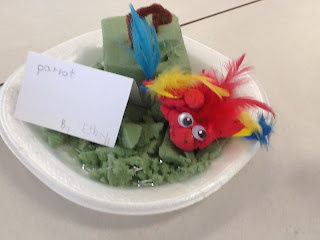One thing I have learned over the years is that there are many ways to teach. I believe that inquiry is a great tool/approach for teaching children, but I also still believe that explicit instruction is needed in some areas and for some students. I believe that balance is key- being flexible in planning to allow for more inquiry or explicit instruction, based on the needs of the students at that time. Developing an inquiry stance is new for me. I am listening carefully to students, working with small groups, allowing for more choice in activities and encouraging students to think for themselves and discover concepts through inquiry. However, I am also still assessing, checking in with students and teaching some concepts explicitly, based upon the needs of my students. Sometimes the explicit instruction happens in a small group format, sometimes it is large group. To help myself, stay on this path of balance, I have a created a day plan to remind me to allow for both approaches to teaching children, but at the same time I give myself permission to "drop the plan" to do more inquiry or explicit instruction, depending on where my students take me.
To help with this my day plan/weekly schedule is written in a way to reflect the two approaches teaching. I use this schedule to keep myself on-track, but I am always flexible so that either approach may be used based upon my student needs.
Here is an example:
Block 1:
- French/Remedial Reading Group and Planning Time

Block 2:
- Song, Prayer, Morning Meeting/Calendar, Knowledge Building Circle
- Word Study Activity (Cheer and print words, rhyming, word endings, MacCracken Phonics etc...)
- Math Mini-Lesson or Problem-Solving Inquiry
- Follow-Up Math activity or Math Stations
-Learning Places (if time)
*I also plan for small group instruction with a focus based upon student needs (often math focus)
 Block 3:
Block 3:-Read Aloud
-Author's Chair (often students share books they have created)
-Shared Reading
-Independent Reading/Guided Reading Group
-Shared Writing/ Writing Mini-Lesson
-Literacy Stations or Independent Writing activity that is teacher directed
*I also plan for small group instruction with a focus based upon student needs (Guided Writing)
 Block 4:
Block 4:-Snack/Read Aloud
-Gym/Religion/Science/Arts Mini-Lesson
-Follow-Up Activity
-Learning Places and Inquiry Stations
*I also plan for small group instruction with a focus based upon student needs (Language or Inquiry groupings)
*Please note that religion, arts and science are often integrated into language arts. As well, DPA activities happen throughout the day and are not listed above*






























































